 Contact us
Contact usIntent
Community
Studio Organo Concepts
About Us
Subsidaries
Studio Organo
TS RERA No.P02400003403.
TS RERA No.P02400003403.

Author: Nagesh Battula
At Organo eco-habitats, every new typology of living we arrive at is the outcome of in-depth analysis of a specific family typology. At the core of every research, there is an empathic need to find solutions to design apt living spaces for each family type. Every community we have developed so far, be it Organo Naandi (1st Rurban community) near Yenkapally, Organo Antharam (1st Cluster homes community) at Chevella, Organo Kandawada (Bespoke Rurban Multi-generational Homes) at Chevella, or Organo Damaragidda (New Rurban Tribe Town homes) near Chevella, has its soul rooted in village living with farming at the core equipped with urban conveniences and amenities. This is in addition to aligning with Organo’s Sapthapatha (7 strands of sustainability) to ensure low impact living and biodiverse neighbourhood creation.
So, how did we arrive at Rurban Tribe Townhomes in the first place? Let’s get you the back story.

Seeds of Rurban Tribe Townhomes concept were sown when our expert team of empathic architects studied the way upwardly mobile urbanites lived. These were the people who were already on their path to adopt an eco-friendly lifestyle. They shopped at organic stores, went to great lengths to ensure that they and their families consumed organic fruits and vegetables, segregated waste, chose their apparel in a more conscious way…in general, they consumed resources responsibly and focused on over-all well-being of their families.
After interacting with these families, it became clear that they have a unique way of consuming things, including not just food, energy, and water, but also their time and real estate's square footage. For example, they already owned a house and were extremely comfortable and settled there, but they lacked access to something essential. They were seeking regions and spaces in their homes or towns where they could pursue their passions and pastimes since they lacked open spaces. At the local level, it was also evident that they desired to socialize and were physically quite active.

They desired areas where they could jog and exercise as well as gather and rejoice. Additionally, they craved for areas in their homes where they could pursue their interests, be it gardening, planting, or something more specialised and particular like writing, sharing, or even creating YouTube videos, which would enhance their learning and benefit others as well, generally referred to as an earth-friendly journey.

This group of individuals was highly family-oriented and wanted to spend time with one another. They delighted in cooking together and sharing their culinary expertise with others. Their meals were more than just a simple meal; they joyfully photographed and shared their happiness, invited visitors, and their weekends were packed with social activities.

Their homes weren't cluttered; they did not believe in hoarding unnecessary items, but at the same time they did acquire objets-d’art, took utmost care of them and displayed them aesthetically. We noticed that they proudly displayed unusual stuff, such as souvenirs from their travels and outcomes of a serious hobby. They were conscious of the amount of their living spaces and enjoyed collecting art from their travels.
Another interesting observation we made was that housekeeping was not their top priority because their time was spent on activities with friends and family and their own passions. They were more interested in spending time gaining skills instead of large square footage and effort needed to maintain those square footages.
Armed with the knowledge gained from the research of specific user group comprising urban families, our architects plunged into giving it a concrete shape. Having an idea, a concept, is one thing but to make them a ground reality takes a lot more than that in terms of finding the right site in an apt location, mapping the logistics, visualizing all the elements and finally, the execution.
As a first step towards finding an apt solution for the focus group, a town home model was created by our expert architects after taking into account all their needs and wants. The major goal was to leave a significant footprint (with zero carbon footprints) that meets certain needs and objectives.
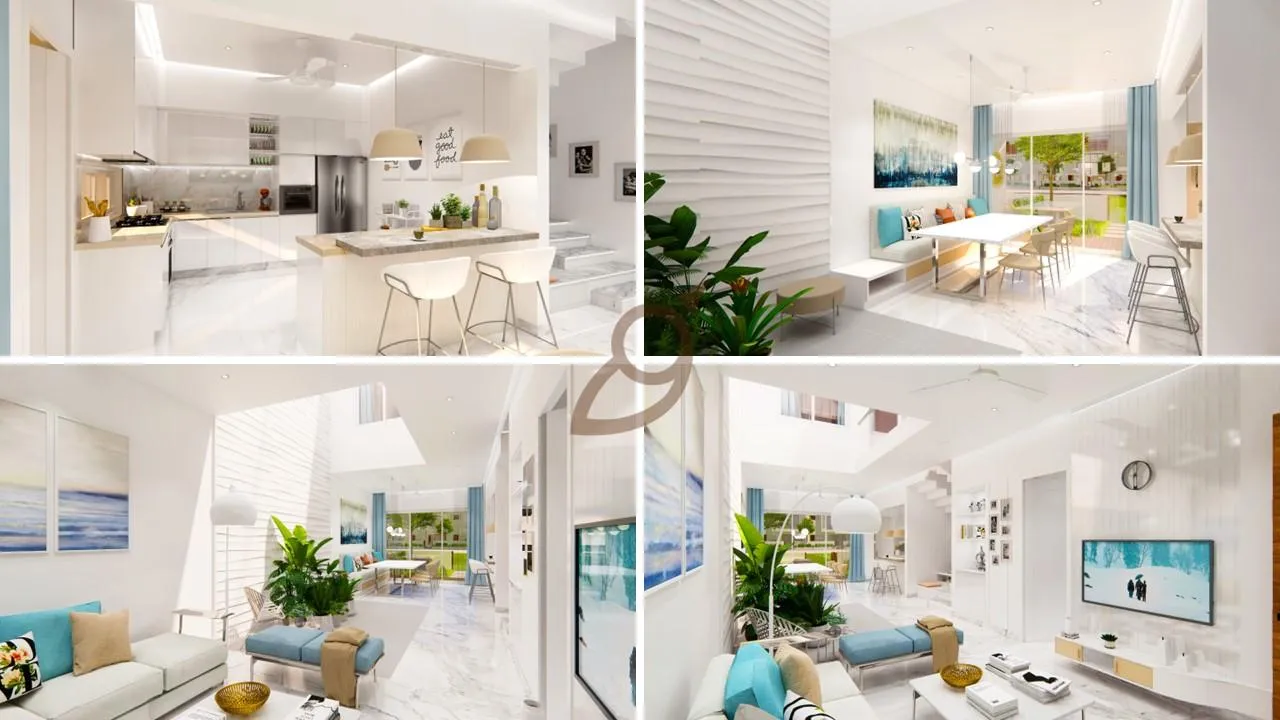
We figured that an airy bright kitchen that is open to the living and eating areas encourages the residents to interact more closely with one another. Inside the residence, the occupants needed to breathe freely and feel open. To accomplish that, a charming front yard and an inviting backyard were added, where the residents could indulge in kitchen gardening or develop bio-enzymes and play zones. For their kids or parents to sit outside, put their feet up, look out into the fruit avenues or farms, or engage with their neighbours, there is space in the yards to become a creative corner or an eco-corner.
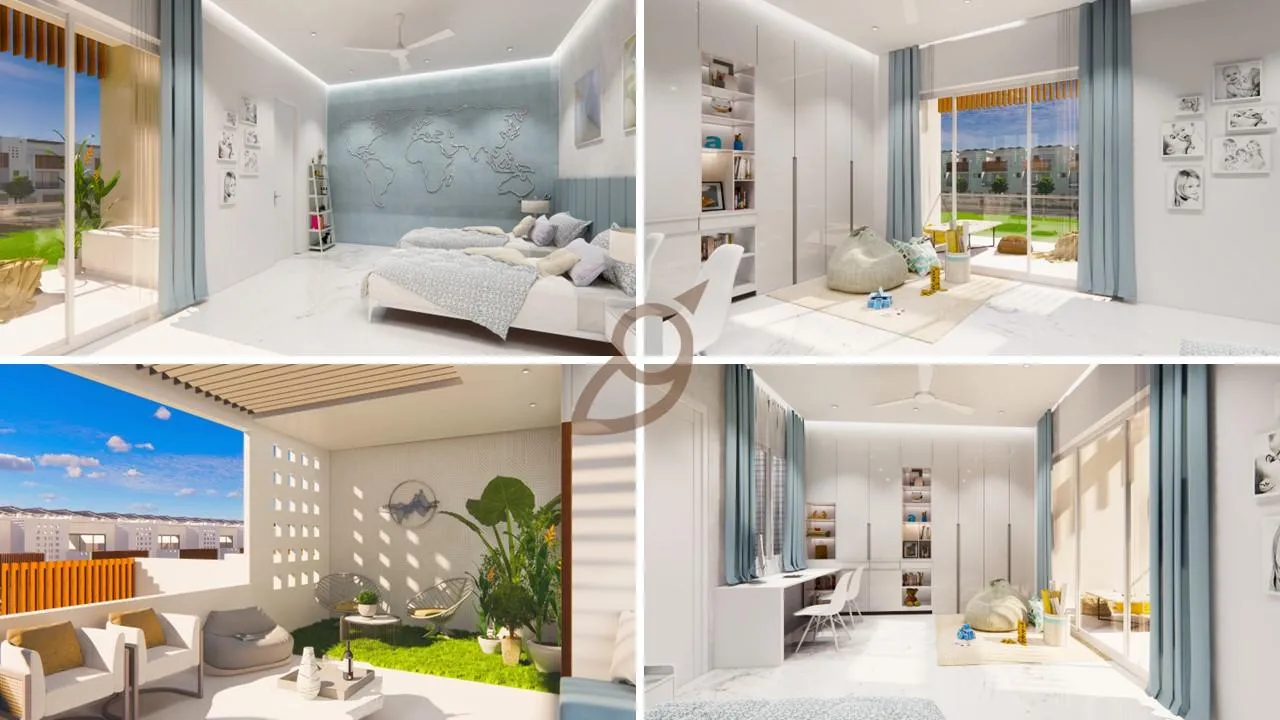
Earlier, homes had large balconies and open areas, but we found that there was a regrettable lack in today’s urban dwellings. As a solution for this issue, the rurban town homes include spacious balconies on both the upper floor and the terraces. There is ample room in the terrace outside. One can bring outside living inside the home with this unusual yet well thought of vertical experience.
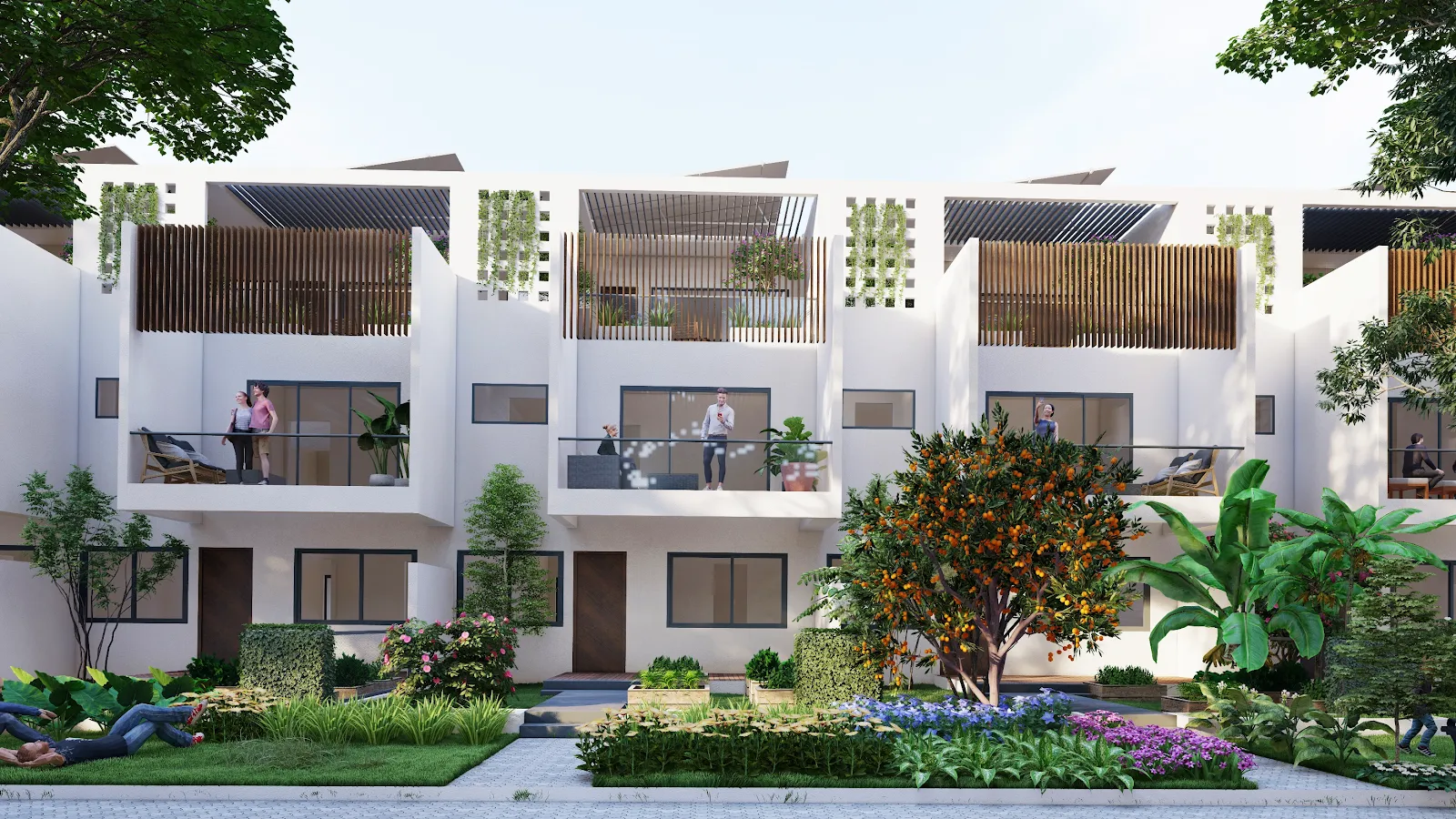
Because the town house considers two elements, this model is a welcome change from how urbanites experienced their homes before. First, from inside the house, there is a fruit tree avenue in the front, which the front of a home looks into and secondly, there are collective farming patches at the back, which the backyard and the upper terraces look into.
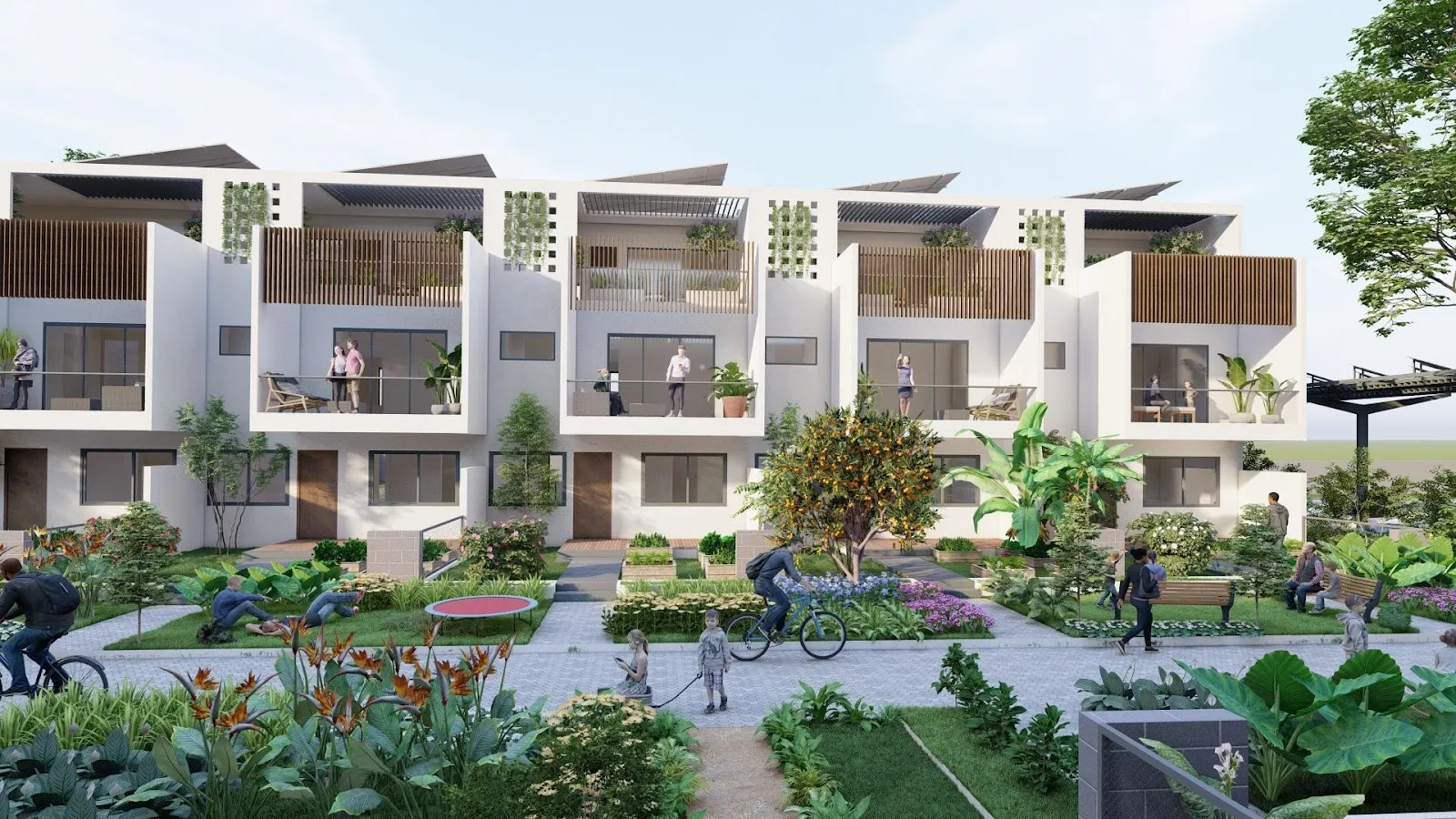
There are many public areas in the communities we refer to as the Tribe Homes. Whether you want a quiet place to work on your project, a small conference where you can gather with members of your team who live in the city and brainstorm ideas, or a yoga session with your neighbours or friends, there are exclusive spaces designed for just that.
The house opens to a farm or a forest, and the neighbourhood has walking trails and sports fields that cater to the vigorous sports that these families engage in, whether it's basketball, kabaddi, or other games.
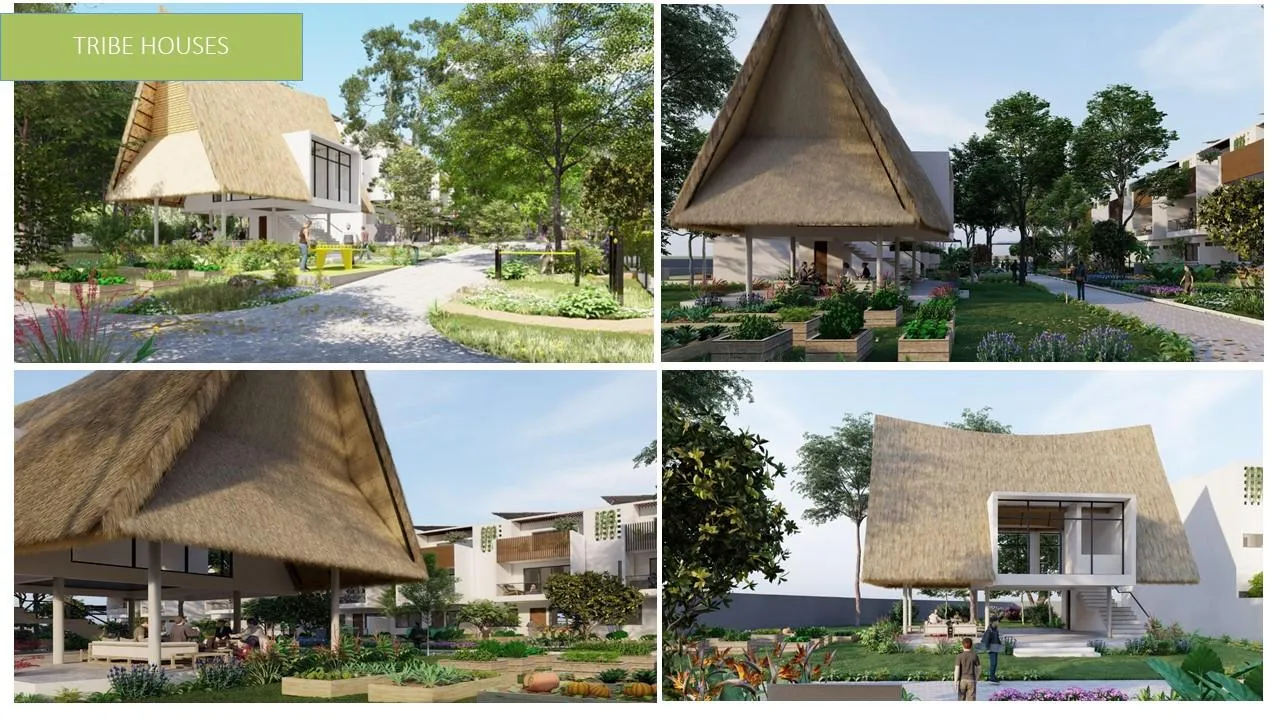
Tribe Club, the main social node, is a very special gathering place in the neighbourhood. It is located beneath a shaded building with an open farm and allows people to wander in, walk out, gather, celebrate, and say hello unexpectedly. From the banquet hall to the party grounds or from the pool area to the gym, happy laughter can be heard throughout the entire complex. There are also guest rooms there to accommodate any additional visitors arriving for the weekend.

To let nature speak for itself, the architecture has been maintained to a minimum. Due to the strong connection with nature, the inhabitants will frequently spend their free time engaging in useful and creative activities, mostly outdoors. Within the houses and around the community, spaces have been built particularly for this natural process to take place. It’s all about living healthy and leading a purposeful life.
